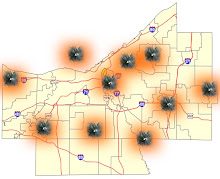Architecture and Urban Design are being hijacked by overly-moralistic, faddish, and clichéd external movements. These external forces are manipulating architectures into vehicles of feel-good vacuity, laden with good intentions, yet ultimately resulting in inarticulate piles. These rudimentary piles are praised for their benevolence, offered at the altar of this movement or that, and everyone involved gets a hearty backslap. Yet, sadly amongst the self-congratulations, for all their supposed progressiveness, the architecture itself is usually diminished and sub-standard.
Hence BOTC’s skepticism with buildings, architects, or organizations that constantly litter their pronouncements with words like “green”, “sustainable,” or “LEED.” In our opinion when the “sustainability” of a project is proclaimed louder than the aesthetics, spaces, form, or theoretical proposition, the building probably “sucks,” which is a detriment to the larger endeavor of “architecture.” This green-ness fetish is especially profound in Northeast Ohio, where the socio-political zeitgeist is saturated with quasi-environmental activism, and the architectural progressivism is rather tepid.
BOTC does not condemn pursuing smart design. But we do cast a sinister eye towards bad design that is layered with a phony integrity supported by a crutch of enviro-moralism. Misapplied moralism, which is heraled by unknowing champions, will hinder the continued pursuit of a relevant architecture in Northeast Ohio, which in the end will be more destructive to our environment.
Subscribe to:
Post Comments (Atom)





3 comments:
As a sustainable design concentrator at Brown University and a long-time resident of Cleveland, I take offense to much of your essay. The tenets of so-called "green" design include a return to a more holistic, long-term, and life cycle approach to architecture. Green design seeks to apply progressive and expressive architecture in a much saner and pragmatic way than Modernism. Sure, architects could green-wash their buildings with labels like "LEED Certified". Is this any worse, though, than modern architects who fail to take into consideration things like site (i.e. Mies van der Rohe's Farnsworth House) or structural support (i.e. Falling Water) or thermal performance (i.e. the Bauhaus)? I would argue that designing with "enviro-moralism" as one's reigning philosophy yields much better results (aesthetically, environmentally, and even culturally) for the region than holding out hope for some other great, contemporary, unifying architecture.
I think the essay was meant to be a critique of the fact that people are claiming to build green, when in fact they are not, yet no one is calling bullshit.
I agree with the sentiment expressed by kyle. You take exception to those you feel are engaging in "greenwashing". That's fine. However, the tone and ridiculous word choices in your entry makes you sound like a petulant reactionary. You're just trying to be cool and you need to be trying harder.
Post a Comment